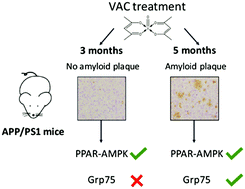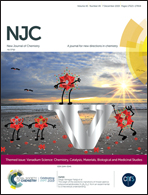Vanadyl acetylacetonate attenuates Aβ pathogenesis in APP/PS1 transgenic mice depending on the intervention stage
Abstract
Based on the similar mechanism shared by diabetes mellitus (DM) and Alzheimer's disease (AD), we previously demonstrated that insulin-enhancing vanadyl complexes could preserve cognitive functions in an AD model of APP/PS1 mice after the emergence of β-amyloid (Aβ) plaques. Herein, we further studied the preventive effects of vanadyl complexes. Vanadyl acetylacetonate (VAC) was given to 3-month-old APP/PS1 mice, whose Aβ levels in the brain started to rise with unobservable deposits. Results showed that VAC could ameliorate Aβ pathogenesis in APP/PS1 mice but was less effective than that administrated at 5 months of age. Investigation on the molecular mechanism revealed that compared with vanadium treatment after Aβ plaque formation, earlier VAC administration showed increased clearance of Aβ deposition in the cerebral cortex, however, was much less effective in neuronal protection due to the failure to activate the Grp75 chaperone. These results suggest that neural cells under Aβ burden might exhibit different metabolic patterns and intracellular signal transduction before and after Aβ plaque formation, thus responding differently to vanadyl complexes at different intervention stages. Further studies clarifying the mechanism of the stage-dependent actions of vanadium would be helpful for the rational design of effective anti-AD vanadium agents and better understanding of AD pathogenesis.

- This article is part of the themed collection: Vanadium Science: Chemistry, Catalysis, Materials, Biological and Medicinal Studies


 Please wait while we load your content...
Please wait while we load your content...